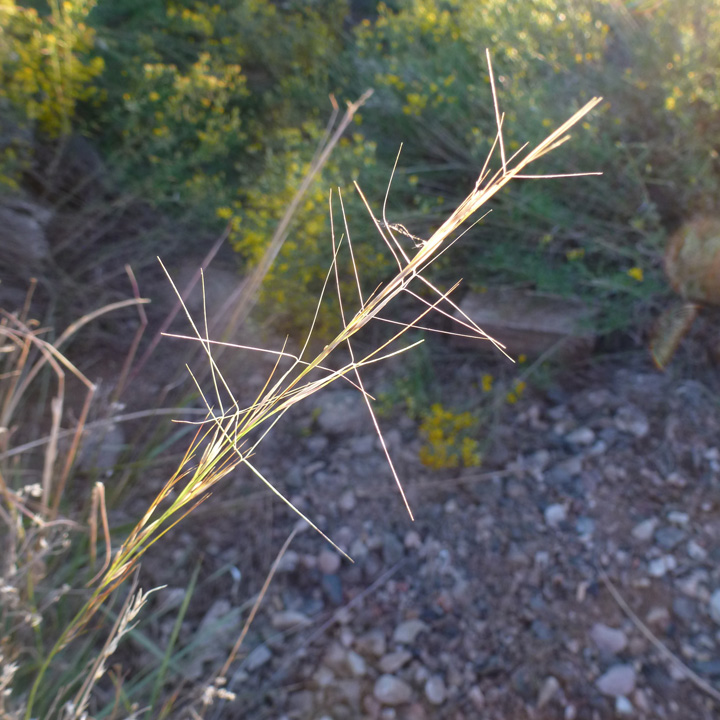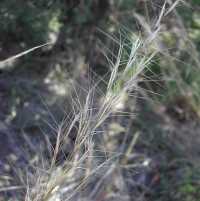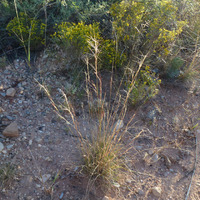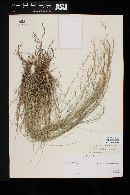|
|
|
|
Family: Poaceae
blue threeawn
[Aristida nealleyi (Vasey) Vasey, moreAristida purpurea var. glauca (Nees) A.H.Holmgren & N.H.Holmgren, Aristida purpurea var. nealleyi (Vasey) Allred, Aristida reverchonii Vasey, Aristida stricta var. nealleyi Vasey] |
Culms 20-45 cm. Blades 5-15 cm, mostly basal, involute. Panicles 8-18(20) cm; primary branches and pedicels mostly appressed to narrowly ascending, without axillary pulvini, stiff, straight, lower branches occasionally flexible. Glumes usually unequal; lower glumes 4-7 mm; upper glumes (7)8-14 mm; lemmas 7-13 mm long, narrowing to about 0.1 mm wide, upper portion sometimes twisted; awns subequal, 15-22(30) mm long, about 0.1 mm wide at the base. 2n = 22, 44. Aristida purpurea var. nealleyi grows on dry slopes and plains at lower elevations than the other varieties, frequently in desert grassland vegetation. Its range extends from the southwestern United States into Mexico. Although var. nealleyi is more distinct than the other varieties, having tight tufts of foliage exceeded by narrow, straw-colored panicles, it grades into var. purpurea, and the panicles resemble those of var. wrightii. It may also be confused with A. arizonica, but differs in having involute, generally straight leaf blades and shorter awns. FNA 2003, Allred 1984 Common Name: blue threeawn Duration: Perennial Nativity: Native Lifeform: Graminoid General: Dense, tufted perennials with slender stems often 30-60 cm, with well-developed fibrous roots. Vegetative: Sheaths glabrous or scabrous, usually with tufts of hairs on either side of the collar; blades narrow, tightly involute, mostly 5-15 cm long. Inflorescence: Contracted panicle, slender, relatively few-flowered, never dense and bushy, 8-20 cm long; spikelets mostly appressed along main panicle axis, occasionally on short, erect-spreading branches, glumes unequal, upper usually one-third longer than lower; lemma 8-13.5 mm; awns nearly equal, 2-3 cm; awn column often twisted, 1-2 mm, lighter in color than the lemma body and slightly narrowed to form the neck, light colored, slightly blotched with purple. Ecology: Found on dry, rocky or sandy slopes and plateaus below 6,000 ft (1829 m); flowers March-September. Distribution: SW US to c MEX. Notes: Distinguished from other varieties by the tight tufts of tightly-rolled, erect blades from the base; appressed infl. branches; Awns 8-35 mm; and the straight panicle branches which typically don-t droop. Drought stressed plants tend to have short stems. Ethnobotany: Unknown Etymology: Aristida is from the Latin arista for awn, while purpurea is Latin for purple, nealleyi is named for Greenleaf Cilley Nealley (1846-1896) a Texas botanist. Synonyms: Aristida glauca, A. nealleyi, A. purpurea var. glauca, A. reverchonii, A. stricta var. nealleyi Editor: SBuckley, 2010 |





